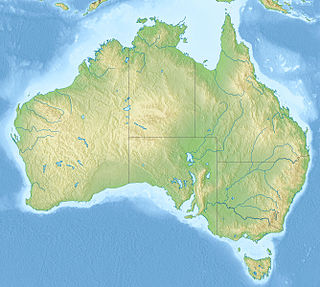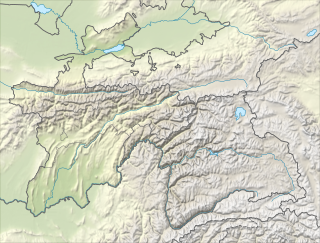 W
WThe Alcobaça Formation, previously known as the Guimarota Formation, is a geological formation in Portugal. It dates back to the Oxfordian stage of the Late Jurassic. It is an important source of information on the diversity of Late Jurassic mammals. Many of the fossils were collected from the now disused and flooded Camadas de Guimarota coal mine.
 W
WThe Antalo Limestone, also known as the Antalo Sequence, is a geological formation in Ethiopia. It is between 300 and 800 metres thick and comprises fossiliferous limestones and marls that were deposited in a reef. Marine microfossils have shown an age between 165 and 150 million years.
 W
WThe Beclabito Formation is a late Jurassic sedimentary geologic formation, found in northwestern New Mexico and northeastern Arizona.
 W
WThe Cañadón Calcáreo Formation is an Oxfordian to Kimmeridgian-aged geologic formation, from the Cañadón Asfalto Basin in Chubut Province, Argentina, a rift basin that started forming since the earliest Jurassic. It was formerly thought to date into the Cretaceous, but the age has been revised with Uranium Lead dating as likely being solely Late Jurassic in age.
 W
WThe Chacarilla Formation is an Oxfordian to Early Cretaceous geologic formation of the Tarapacá Basin in northern Chile, close to the border with Bolivia. The marine and fluvial formation preserves several dinosaur trackways and has been declared a Natural Sanctuary in 2004.
 W
WThe Chari Formation is a Jurassic geologic formation in Gujarat, western India. Dinosaur remains are among the fossils that have been recovered from the formation, although none have yet been referred to a specific genus.
 W
WThe Corallian Group or Corallian Limestone is a geologic group in England. It is predominantly a coralliferous sedimentary rock, laid down in the Oxfordian stage of the Jurassic. It is a hard variety of "coral rag". Building stones from this geological structure tend to be irregular in shape. It is often found close to seams of Portland Limestone. It is a younger limestone than its near-neighbour, the Oolitic, as found in the Cotswolds, in Gloucestershire. It is laterally equivalent to and interfingers with units of the Ancholme Group.
 W
WThe Ellis Group is a stratigraphical unit of Bajocian-Oxfordian age in Alberta, Sakatchewan, Montana and Wyoming in the Western Canadian Sedimentary Basin. It takes the name from Fort Ellis, Montana, and was first described in outcrop in the Rocky Creek Canyon by A.C. Peale in 1893.
 W
WThe Entrada Sandstone is a formation in the San Rafael Group found in the U.S. states of Wyoming, Colorado, northwest New Mexico, northeast Arizona, and southeast Utah. Part of the Colorado Plateau, this formation was deposited during the Jurassic period sometime between 180 and 140 million years ago in various environments, including tidal mudflats, beaches, and sand dunes. The Middle Jurassic San Rafael Group was dominantly deposited as ergs in a desert environment around the shallow Sundance Sea.
 W
WThe Fernie Formation is a stratigraphic unit of Jurassic age. It is present in the western part of the Western Canada Sedimentary Basin in western Alberta and northeastern British Columbia. It takes its name from the town of Fernie, British Columbia, and was first defined by W.W. Leach in 1914.
 W
WThe Girón Formation is an extensive geological formation stretching across 325 kilometres (202 mi) from the north in Teorama, Norte de Santander, across the Mesa de Los Santos and Chicamocha Canyon towards west of Nobsa, Boyacá in the northern part of the Altiplano Cundiboyacense in the south. The formation extends across the northern and central part of the Eastern Ranges of the Colombian Andes.
 W
WThe Haifanggou Formation is a fossil-bearing rock deposit located near Daohugou village of Ningcheng County, in Inner Mongolia, northeastern China.
 W
WThe Jagua Formation is a Late Jurassic geologic formation in the Sierra de los Órganos and Sierra del Rosario mountain ranges in Pinar del Río Province, western Cuba. Plesiosaur, pliosaur, pterosaur, metriorhynchid, turtle and dinosaur remains are among the fossils that have been recovered from its strata.
 W
WThe Kalur Chert is a geologic formation in Albania. It preserves fossils dating back to the late Bajocian to mid Oxfordian of the Jurassic.
 W
WThe Karabastau Formation is a geological formation and lagerstätte in Kazakhstan whose strata date back to the Late Jurassic. It is an important locality for insect fossils that has been studied since the early 20th century, alongside the rarer remains of vertebrates, including pterosaurs, salamanders, lizards and crocodiles.
 W
WThe Kiyosu-e Formation is a Middle Jurassic (Callovian) to Early Cretaceous (Berriasian) geologic formation of the Toyonishi Group in Yamaguchi Prefecture, Japan. Fossil ornithopod tracks have been reported from the formation.
 W
WThe Korallenoolith Formation is a geologic formation in Germany. It preserves fossils dating back to the Jurassic period. It predominantly consists of oolitic limestone.
 W
WThe Kugitang Formation or Group is an Oxfordian geologic formation in Tajikistan and Uzbekistan and a geologic group in Turkmenistan. Dinosaur remains diagnostic to the genus level are among the fossils that have been recovered from the formation.
 W
WThe Kurek Formation is a late Oxfordian geologic formation of the Kugitang Svita in Turkmenistan and Uzbekistan. Fossil sauropod tracks have been reported from the formation.
 W
WThe Lotena Formation is a geologic formation dated from the Late Callovian to Early Oxfordian in the Neuquén Basin in Mendoza Province, Argentina. The formation, first defined by Weaver in 1931 and named after Cerro Lotena, consists of fluvial conglomerates, calcareous sandstones and marine limestones and shales. The Lotena Formation is overlain by the La Manga Formation and overlies the Lajas Formation of the Cuyo Group. Initially, the fossil find of the pterosaur Herbstosaurus pigmaeus was reported from the formation, but this fossil was found in the younger Vaca Muerta. The formation is a reservoir rock in the Neuquén Basin.
 W
WThe Montejunto Formation is an Oxfordian geologic formation in Portugal. Dinosaur remains diagnostic to the genus level are among the fossils that have been recovered from the formation.
 W
WThe Oxford Clay is a Jurassic marine sedimentary rock formation underlying much of southeast England, from as far west as Dorset and as far north as Yorkshire. The Oxford Clay Formation dates to the Jurassic, specifically, the Callovian and Oxfordian ages, and comprises two main facies. The lower facies comprises the Peterborough Member, a fossiliferous organic-rich mudstone. This facies and its rocks are commonly known as lower Oxford Clay. The upper facies comprises the middle Oxford Clay, the Stewartby Member, and the upper Oxford Clay, the Weymouth Member. The upper facies is a fossil poor assemblage of calcareous mudstones.
 W
WThe Passage Beds is a member of the Corallian Oolite Formation, a geologic formation in England. The subtidal to marine sandstone preserves fossils of bivalves, gastropods, crinoids, echinoids and ammonites dating back to the Late Jurassic period.
 W
WThe Pastos Bons Formation is a Late Jurassic geologic formation of the Parnaíba Basin in Maranhão, northeastern Brazil. The formation forms part of the sag phase of the basin. It overlies the Sardinha Formation and is overlain by the Mosquito Formation. The fluvial to lacustrine sandstones and shales have provided fossils of a coelacanth fish, Parnaibaia maranhaoensis and a paralligatorid named after the formation, Batrachomimus pastosbonensis.
 W
WThe Purlawaugh Formation is a Toarcian to Oxfordian geologic formation of New South Wales, Australia. The formation has provided many fossil fish and flora.
 W
WThe Qigu Formation is a Late Jurassic (Oxfordian) geologic formation in the Southern Junggar Basin in China. Indeterminate Dinosaur remains are among the fossils that have been recovered from the formation, including theropod teeth and a fibula. a stegosaur dorsal vertebra and a Eusauropod tooth. Xinjiangtitan was erroneously thought to be from this formation, but it is actually from the older Qiketai Formation, which is in a different basin. The term "Qigu Formation" is also used to sediments of equivalent age in the Turpan Basin, but this might better be treated as a separate formation. It is laterally equivalent to the Shishugou Formation.
 W
WThe Shaximiao Formation is a Middle to Late Jurassic geological formation in Sichuan, China, most notable for the wealth of dinosaurs fossils that have been excavated from its strata. The Shaximiao Formation is exposed in and around the small township of Dashanpu, situated seven kilometres north-east from Sichuan's third largest city, Zigong, in the Da'an District.
 W
WThe Shishugou Formation is a geological formation in Xinjiang, China.
 W
WThe Smackover Formation is a geologic formation in Arkansas. It preserves fossils dating back to the Jurassic period.
 W
WThe Summerville Formation is a geological formation in New Mexico, Colorado, and Utah of the Southwestern United States. It dates back to the Oxfordian stage of the Late Jurassic.
 W
WThe Tauglboden Formation is a geologic formation in Tirol, Austria. It preserves fossils dating back to the Oxfordian stage of the Jurassic period. The radiolarites were deposited in a deep marine environment.
 W
WThe Tiaojishan Formation is a geological formation in Hebei and Liaoning, People's Republic of China, dating to the middle-late Jurassic period. It is known for its exceptionally preserved fossils, including those of plants, insects and vertebrates. It is made up mainly of pyroclastic rock interspersed with basic volcanic and sedimentary rocks. Previously, the Tiaojishan Formation was grouped together with the underlying Haifanggou Formation as a single "Lanqi Formation." Most researchers now agree that the Daohugou Bed, of formerly controversial dating, is a part of the Tiaojishan formation. The Tiaojishan Formation forms a key part of the Yanliao Biota assemblage.
 W
WThe Tiourarén Formation is a geological formation in the Agadez Region of Niger whose strata were originally thought to be Early Cretaceous. However, re-interpretation of the sediments showed that they are probably Middle Jurassic (Bathonian) in age. It is the uppermost unit of the Irhazer Group. Dinosaur remains are among the fossils that have been recovered from the formation.
 W
WThe Ukureyskaya Formation, also referred to as the Ukurey Formation is a geological formation made up of Middle Jurassic and Late Jurassic layers. It covers large areas around Kulinda. The formation is where the type specimen fossils of Kulindadromeus zabaikalicus were found, alongside a single tooth from a medium-sized theropod of unknown affiliations and other indeterminate ornithschians. Recent dating work suggest that the layers containing Kulindadromeus are Bathonian in age.
 W
WThe Ulan Malgait Formation is a Late Jurassic geologic formation in Mongolia. Dinosaur remains are among the fossils that have been recovered from the formation, although as of 2004 none have yet been referred to a specific genus.
 W
WThe Walloon Coal Measures are a Late Jurassic geologic subgroup in Queensland, Australia. Deposited within the Surat Basin it is Oxfordian to early Tithonian in age based on lead-uranium dating of tuffites within the unit. The dinosaur Rhoetosaurus is known from the unit.
 W
WThe Zarbuz Formation, also named Zarbiz Svita, is a Jurassic geologic formation in Tajikistan. Fossil ornithopod tracks have been reported from the formation.